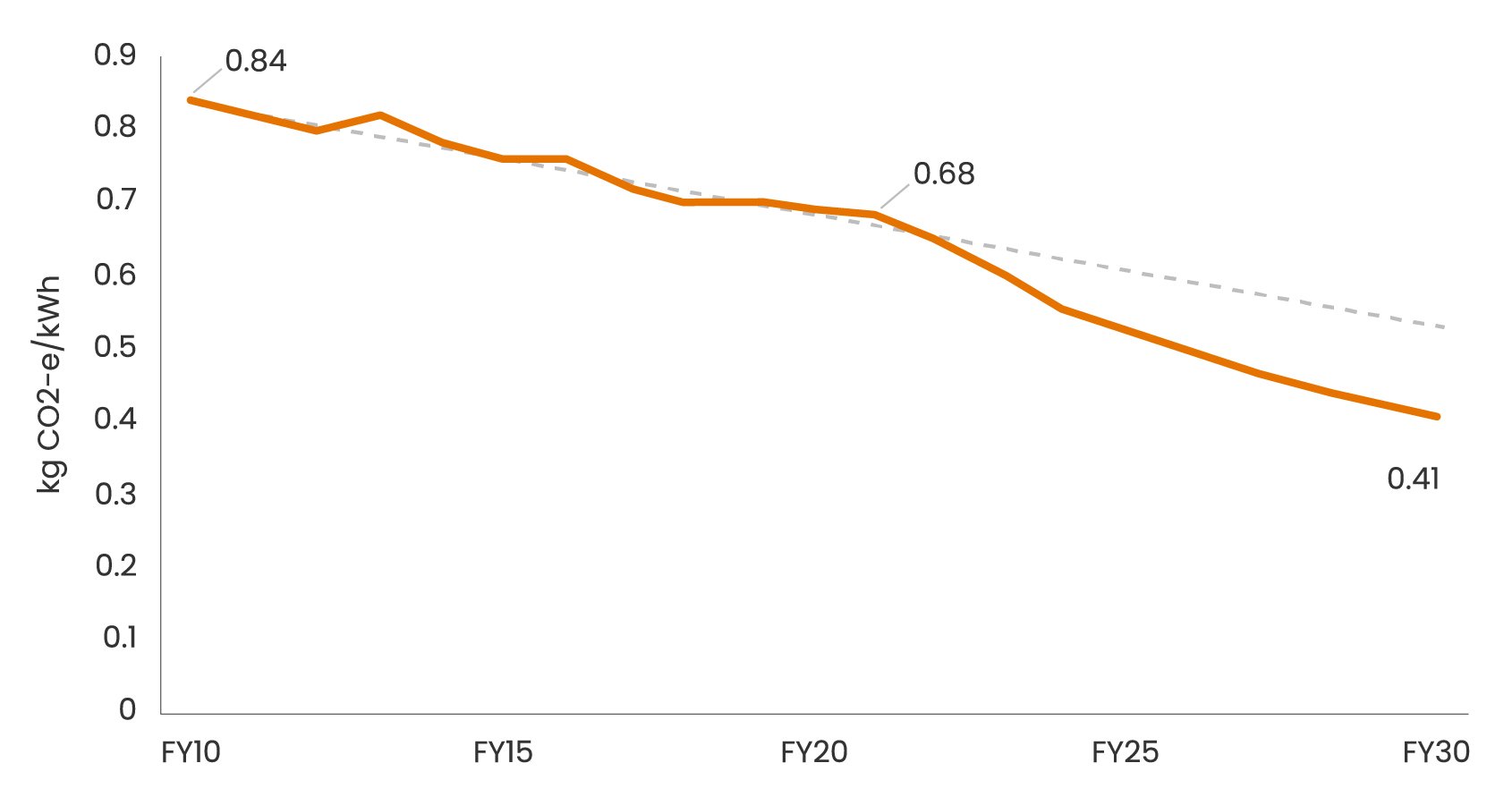Want to understand the different types of carbon emission measurements, and how they apply to your energy? We’ve got your quick guide.
We hear a lot about carbon emissions. And more recently, about reducing carbon emissions intensity. We are likely to hear more about both of these as the push towards net-zero ramps up over the next few years. Here’s the difference between the two:
What are carbon emissions?
Although many people consider emissions to be only carbon, emissions actually cover several greenhouse gases, including CO2, methane and nitrous oxide.
Emissions are measured as CO2-e, with the ‘-e’ covering the greenhouse gases that are not just carbon.
They are an absolute number, representing all the emissions emitted. Reducing the volume of emissions is the main target of most climate initiatives and net-zero activities.
What is carbon emissions intensity?
Carbon emissions intensity is a different measure. It measures the volume of emissions of a particular output, for example per unit of gross domestic product (GDP).
It can also be measured against a more specific output, like the amount of fuel used in operations, or an industrial activity.
Reducing carbon emissions intensity therefore means reducing pollution created per unit of GDP, however if GDP grows then so do total emissions.
Carbon emissions intensity is a useful tool for countries or industries to compare their various activities and establish actions to reduce emissions.
In the case of an electricity network, emissions intensity is primarily driven by the proportion of renewables travelling on the network. So as the proportion of renewable generation increases the grid becomes greener and this leads to the carbon emissions intensity falling.
| State/Territory | 2019-20 emission factor | 2020-21 emission factor |
|---|---|---|
| NSW | 0.81 | 0.81 |
| VIC | 1.02 | 0.98 |
| QLD | 0.81 | 0.81 |
| SA | 0.44 | 0.43 |
| WA (South West Interconnected System) | 0.69 | 0.68 |
| TAS | 0.15 | 0.17 |
| NT | 0.63 | 0.62 |
| ACT | 0.81 | 0.81 |
Emissions intensity and the electricity network
As an electricity , we do not currently make investments in generation sources used to create power. However, we are responsible for connecting new energy sources, typically renewable, safely and efficiently into the grid for use, which should see a reduction in carbon emissions.
It’s something that often confuses customers, but Western Power doesn’t have a role in choosing the energy sources, but we are highly supportive of increasing the amount of renewables on the grid to reduce the emissions intensity of the WA economy and households.” says Gus Riggs, Strategy & Government Relations Manager at Western Power
“This is why we work hard to find solutions to safely connect as many renewables to the grid as possible - from rooftop solar panels to wind farms and even now mini-hydro in Walpole.”
“And because of the ongoing investment in renewables , WA’s emissions intensity has been slowly decreasing over the past decade, which is a trend we want to see continue.”
South West Interconnected System (SWIS) Emissions Factors

Source: Historical Greenhouse & Energy Reporting - Australia's Emissions Projections 2021
Electrification and carbon emissions
With more energy sourced from renewables, another key aspect to reducing emissions is to electrify more of our everyday tools– from stovetops to electric vehicles (EVs), replacing traditional fossil fuels.
“As our society and economy electrifies, you will see an overall reduction in carbon emissions and emissions intensity.”
